Combating a serious COVID-19 surge
Last updated 11/25/2020 at Noon
Oregon Governor Kate Brown’s November 17 temporary freeze proclamation placed many restrictive actions in place to “bend the COVID-19 curve.” With no easy answers, policies were enacted to dramatically reduce COVID-19 cases, hospitalizations, and deaths — while reducing stress on our valiant medical system.
Should she have done more? I answer, “Yes.” Purposeful short-term sacrifice for long-term solutions. Indeed, possibly implementing proven successful COVID-19 actions from Canada’s Nova Scotia.
Since my October 20 column in The Nugget, the number of total cases for both Deschutes County and Oregon has increased dramatically. The predictability is very strong as shown in their regression factor values (R2). Last week’s numbers were the highest yet for Deschutes County (244) and Oregon (7,753).
The historic and predicted trends for Deschutes and Oregon weeks follow — using simple linear regression. If a major COVID-19 vaccine becomes administered, that would radically change the numbers.
Total cases, hospitalizations, and resultant deaths (highest yet of 20 on November 19) are on the rise.
The COVID-19 positive test rate is a key metric, used by the State of Oregon in reopening/restriction policy. It is the number of reported positive COVID-19 tests divided by the total number of tests. Currently, Oregon is over 15 percent.
Authoritative Johns Hopkins University (JHU) says it is a measure of transmission in the community. “A 5 percent or greater percent positive rate can indicate it may be a good time to add restrictions to slow the spread of disease.”
Early Oregon COVID-19 testing concentrated on people displaying COVID-19 symptoms — acting more to confirm a patient diagnosis with displayed symptoms. Later, widespread testing was for detection in the general public.
In Deschutes County, from April through June, rates averaged 1.8 percent — well below 5 percent. Oregon was mostly in stay-at-home orders then.
July was at 4.8 percent, pushing the 5-percent threshold.
Governor Brown opened 31 of 38 counties on June 4. Social interaction, with local residents as well as incoming tourists — particularly before/around July 4 — most likely drove the positive rate higher. Subsequently, the mandate to don masks/safety measures drove the rate down during August through October, averaging 3 percent.
Oregon’s positive rate has been precariously near/exceeding 5 percent, except for April, May, and November.
With just two weeks’ “solid” data into November, both Deschutes’ and Oregon’s positive rates increased significantly from October.
So, what started happening in November?
Let’s analyze Oregon’s age brackets and key data for the number of cases, hospitalized, and tragically, death. This helps us understand a person’s potential social behavior to COVID-19 “consequences” (hospitalization with catastrophic fatality potential).
From March through July, older citizens with underlying conditions were prone to become sick — gravely or fatally. With the summer reopening, the 20-39 aged population showed documented, marked increases in COVID-19 cases.
Via the Oregon Health Authority (OHA) website, the 20 to 49 age brackets have 55.5 percent of total cases, averaging a 3.2 percent hospitalization rate and .07% fatality rate. The 80+ age bracket makes up only 3.5 percent of total cases, with a 32.5 percent hospitalization rate, and 19 percent fatality rate. Obviously, the differences in living arrangements, socialization opportunities, and general health conditions are vastly different. It could be concluded arguably, that the 20- to 49-year-olds are more likely to have social interaction without the higher consequences compared to the 80+ age bracket.
Let’s compare data against the Canadian province, Nova Scotia — the North American leader. Nova Scotia’s COVID-19 total cases are 722 percent better than Deschutes County and 1,100 percent better than Oregon overall.
While reducing COVID-19 — and recently enacting more restrictions — here are some of Nova Scotia’s findings. Nova Scotia is restricting “young adults getting together.”
Per Nova Scotia’s Chief Medical Officer Dr. Robert Strang’s address on November 20:
“The main driver of transmission is our own social interactions. We’re seeing spread primarily among young adults getting together to socialize in their homes and out in public businesses. When I say that, I want to be clear we’re not blaming anybody.”
Restricting socialization in private and public settings — especially with people in the 20 to 49-year-old bracket — seems like a feasible attempt to reduce COVID-19 outcomes; unpopular but pragmatic; a massive impact on business, schools, and normal life.
But needed. The numbers support it.
Send comments to [email protected]

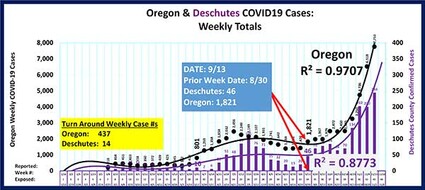
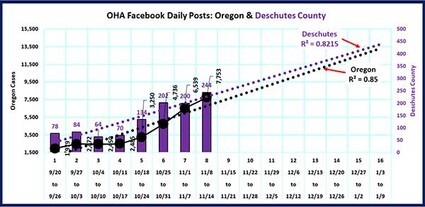
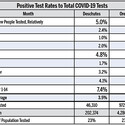
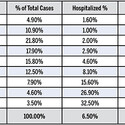

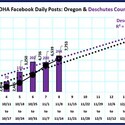















Reader Comments(0)